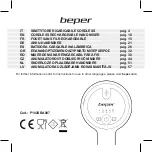
E Q / D Y N A M I C S S E C T I O N
page 17
D-12 / July 2006
Ratio
This control determines how much the
compressor’s gain is reduced in relation to the
applied signal. For instance, if the ratio is set at
3:1 and the input level above threshold changes
by 12dB, the output level will changed by 4dB.
Normal usage is between approximately 2:1 and
4:1; anything greater than, say, 7:1 may be
considered “limiting”. The ratio can be set any-
where from 1.0:1 to 20.0:1.
Release
This knob determines the nominal time the compressor takes to
recover after excitation (between 50.0mS and 3.0 Seconds). Short
release times make for more intense, denser, obvious processing;
longer release times are better suited to automatic gain control.
Makeup Gain
When fairly deep compression is invoked (large gain reduction) it
can be necessary to increase the compressor’s output level back up to
nominal system signal level; up to 20dB of output gain is available to
allow this.
Gate
The Dynamics section also contains a noise gate, useful for reduc-
ing sounds below a certain threshold.
The GATE THRES control determines the signal level at which the
gate operates. This level be anywhere between -60.0dB and +10.0dB.
This setting will determine the minimum available setting of the
LIMITER THRES knob; the LIMITER THRES cannot be set lower
then the GATE THRES.
The OPEN knob determines how quickly the gate opens to allow
signal passage once the threshold is reached. It can be set anywhere in
the range of 0.1mS to 330.0mS. The gate close time is fixed at 200mS.
The DEPTH knob sets the amount of attenuation given to signals
below the GATE THRES setting, and can be adjusted to be between
0dB and 30.0dB.
The HOLD knob determines how long the gate will stay open after
the signal falls below the GATE THRES level before it begins to close,
and can be adjusted between 50.0mS and 3.0 Seconds.
















































